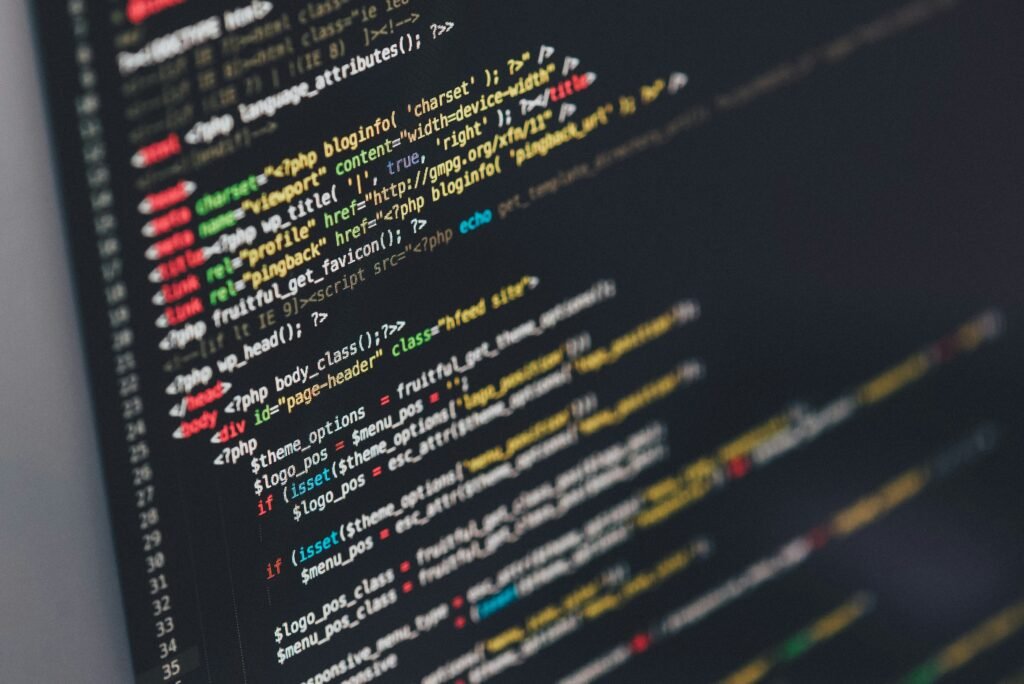Are you curious about the fascinating world of health informatics? Look no further! In this article, we will explore a fact about health informatics that will surely pique your interest. So, sit back, relax, and get ready to uncover a valuable piece of information that sheds light on the ever-evolving field of healthcare technology.
Read More Information at Health Joy
Definition of Health Informatics
Health informatics is the field that combines healthcare and technology to optimize the management and delivery of healthcare services. It involves the use of various digital tools and systems to collect, store, analyze, and disseminate health-related data. The main purpose of health informatics is to improve the quality of patient care and enhance overall healthcare outcomes by making data-driven decisions and fostering efficient communication among healthcare providers.
Use of Technology in Healthcare
Technology plays a vital role in modern healthcare. From electronic health records (EHRs) to telemedicine and remote patient monitoring, technological advancements have revolutionized the way healthcare is delivered. With the integration of various digital systems and applications, healthcare professionals can now access patient information in real-time, collaborate with colleagues from across different healthcare settings, and provide remote care to patients in need. These technological innovations have not only increased efficiency but also improved patient experiences.
Electronic Health Records (EHR)
One significant application of technology in healthcare is the advent of electronic health records (EHRs). EHRs are digital versions of traditional paper medical records that contain comprehensive patient information. This includes medical history, test results, diagnoses, treatments, medications, and more. EHRs enable healthcare providers to have a complete and up-to-date view of a patient’s health, promoting better care coordination and reducing errors in medical decision-making.
Telemedicine and Remote Patient Monitoring
Telemedicine and remote patient monitoring have transformed access to healthcare services, especially in remote areas or during times of crisis. Telemedicine allows patients to consult with healthcare professionals remotely through telecommunication technologies, eliminating the need for in-person visits. Remote patient monitoring incorporates wearable devices and sensors to collect health data from patients in their own homes, enabling healthcare providers to monitor their conditions and provide timely interventions. These applications have improved accessibility to healthcare and reduced the burden on healthcare facilities.
Healthcare Analytics and Predictive Modeling
Healthcare analytics and predictive modeling leverage advanced data analysis techniques to derive meaningful insights and predictions from vast amounts of health data. By analyzing this data, healthcare professionals can identify patterns, trends, and potential risks, allowing for more accurate diagnoses and treatment plans. Predictive analytics can also help in forecasting disease outbreaks, optimizing resource allocation, and improving population health management. These tools enable evidence-based medicine, leading to improved patient outcomes and more efficient use of healthcare resources.

Read More Information at Health Joy
Integration of Healthcare Systems
Health informatics facilitates the integration of various healthcare systems, making it easier for healthcare providers to access and use patient data seamlessly. One of the main goals is to achieve interoperability, which means different systems can exchange data and be understood by one another. Interoperability is crucial for care coordination, as it allows clinicians from different healthcare settings to access a patient’s complete medical history and collaborate effectively. Integrated healthcare systems also streamline administrative processes, reduce duplication of tests and procedures, and enable efficient communication among healthcare teams.
Benefits of Health Informatics
Improved Patient Care and Outcomes
One of the primary benefits of health informatics is the improvement in patient care and outcomes. By having access to complete and accurate patient information, healthcare professionals can make more informed decisions about diagnoses, treatments, and interventions. Immediate access to test results and medical history allows for timely interventions and minimizes medical errors. Furthermore, health informatics promotes care coordination among different healthcare providers, ensuring continuity and consistency in patient care. Ultimately, these improvements lead to enhanced patient experiences and better health outcomes.
Efficient Health Data Management
Health informatics simplifies the management of health data and replaces traditional paper-based systems with digital platforms. This streamlines data entry, storage, retrieval, and sharing, reducing the time and effort required for administrative tasks. Digital systems also enable healthcare professionals to easily search, filter, and analyze data, further enhancing efficiency in decision-making. Furthermore, health informatics improves data accuracy and completeness by minimizing errors associated with handwriting and manual transcription. Efficient health data management leads to improved data quality and supports evidence-based practice.
Enhanced Communication Among Healthcare Providers
Effective communication among healthcare providers is crucial for providing optimal patient care. Health informatics facilitates communication by enabling the sharing of patient information and fostering collaboration among different healthcare teams. With the use of electronic systems, healthcare professionals can securely exchange information, consult with specialists, and discuss treatment plans in a timely and efficient manner. This enhanced communication eliminates the need for redundant tests, reduces medical errors, and ensures a seamless continuum of care. It also promotes interdisciplinary collaboration, allowing for a holistic approach to patient care.

Role of Health Informatics in Data Analysis
Collection and Analysis of Medical Data
Health informatics plays a vital role in the collection and analysis of medical data. Through the use of electronic systems and digital tools, healthcare professionals can collect, store, and analyze vast amounts of patient data. This includes clinical data, administrative data, research data, and more. By leveraging data analytics techniques, healthcare professionals can identify patterns, correlations, and trends in the data, leading to valuable insights for decision-making. This data-driven approach supports evidence-based medicine, allowing for more accurate diagnoses, personalized treatment plans, and improved patient outcomes.
Identification of Healthcare Trends
Health informatics enables the identification of healthcare trends by analyzing large datasets over time. By examining patterns in health data, healthcare professionals can detect emerging diseases, monitor prevalence rates, and identify potential risk factors. This information is crucial for public health planning, resource allocation, and policy development. Additionally, healthcare trends analysis helps in predicting disease outbreaks, optimizing preventive interventions, and addressing health disparities. Health informatics empowers healthcare professionals to make proactive decisions and take appropriate actions to improve population health outcomes.
Facilitation of Evidence-Based Medicine
Evidence-based medicine involves integrating the best available evidence from scientific research with clinical expertise and patient preferences to inform decision-making. Health informatics plays a crucial role in facilitating evidence-based medicine by providing healthcare professionals with access to up-to-date research findings, clinical guidelines, and treatment protocols. By incorporating this evidence into their practice, healthcare professionals can make informed decisions about diagnoses, treatments, and interventions. This leads to improved patient outcomes, increased patient safety, and the delivery of high-quality, cost-effective care.
Importance of Health Informatics in Decision Making
Support for Clinical Decision-Making
Health informatics provides valuable support for clinical decision-making. By providing access to comprehensive patient information, trends, and evidence-based guidelines, healthcare professionals can make well-informed decisions about patient care. The integration of health data from various sources allows for a holistic view of the patient’s health, considering factors such as medical history, test results, medication interactions, and comorbidities. This comprehensive information enables healthcare professionals to develop personalized treatment plans, minimize risks, and optimize outcomes. Health informatics empowers clinicians to provide patient-centered care based on the best available evidence.
Improved Resource Allocation
Effective resource allocation is crucial for the efficient functioning of healthcare systems. Health informatics plays a significant role in optimizing resource allocation by providing insights into health trends, population health needs, and service utilization patterns. By analyzing data related to patient demographics, disease prevalence, and resource utilization, healthcare administrators can make informed decisions about resource allocation, ensuring equitable distribution and maximum efficiency. This helps in optimizing healthcare services, minimizing waste, and maximizing the utilization of resources, ultimately leading to improved healthcare delivery and outcomes.
Enhanced Policy Development
Health informatics is instrumental in informing policy development in healthcare. By analyzing health data, trends, and outcomes, policymakers can identify areas for improvement, assess the impact of existing policies, and propose new policies to address emerging health challenges. Health informatics promotes evidence-based policy development by providing data-driven insights into population health needs, healthcare disparities, and the effectiveness of interventions. This ensures that policies are targeted, evidence-based, and responsive to the needs of the population. The integration of health informatics in policy development leads to more effective and efficient healthcare systems.

Challenges in Health Informatics
Data Privacy and Security
With the increasing reliance on digital systems and the exchange of patient data, ensuring data privacy and security is a significant challenge in health informatics. The protection of sensitive patient information from unauthorized access, breaches, and misuse is of paramount importance. Healthcare organizations must implement robust security measures, such as secure data storage, encryption, access controls, and staff training to protect patient privacy. Adhering to industry standards, regulations, and ethical guidelines is essential to maintaining the trust and confidentiality of patient information in health informatics.
Interoperability Issues
Interoperability refers to the ability of different information systems and healthcare applications to exchange and interpret data seamlessly. However, achieving interoperability in health informatics is a complex challenge due to the existence of numerous proprietary systems, different data formats, and varying data standards across healthcare organizations. Incompatibility between systems can lead to data fragmentation, duplication, and errors. It hinders the ability to share and exchange patient information effectively, limiting care coordination and continuity. To address this challenge, efforts are underway to promote the adoption of standardized data formats and interoperable systems within the healthcare industry.
Resistance to Technological Change
While health informatics offers numerous benefits, there can be resistance to technological change within healthcare settings. It is common for healthcare professionals and staff to feel overwhelmed or apprehensive about adopting new technologies, fearing a disruption to established workflows or concerns about technical competency. Additionally, there may be concerns about the potential impact on patient-provider relationships and the loss of the human touch in healthcare delivery. Overcoming resistance to technological change requires effective change management strategies, ongoing training and support, stakeholder engagement, and clear communication of the benefits and goals of health informatics.
Applications of Health Informatics
Electronic Health Records (EHR)
Electronic health records (EHRs) are a core application of health informatics. EHRs replace traditional paper-based medical records, enabling healthcare professionals to document, store, and retrieve patient information in a digital format. EHRs facilitate real-time access to patient data, enable data sharing among healthcare providers, and promote care coordination. They also support clinical decision-making by providing comprehensive patient information, clinical alerts, and decision support tools. EHRs enhance efficiency, patient safety, and the continuity of care.
Telemedicine and Remote Patient Monitoring
Telemedicine and remote patient monitoring have gained significant traction as applications of health informatics. Telemedicine involves the use of telecommunication technologies to provide remote healthcare services, such as virtual consultations, remote diagnosis, and follow-up care. This enables patients to access healthcare services from the comfort of their homes, regardless of geographical barriers. Remote patient monitoring utilizes wearable devices and sensors to collect patient data, such as vital signs, activity levels, and medication adherence, remotely. Healthcare providers can monitor patients’ conditions and provide timely interventions as needed. These applications increase access to healthcare, enhance patient convenience, and reduce healthcare costs.
Healthcare Analytics and Predictive Modeling
Healthcare analytics and predictive modeling utilize data analysis techniques to derive insights from health data. By analyzing large datasets, healthcare professionals can identify patterns, trends, and associations, leading to better decision-making and improved patient outcomes. Healthcare analytics includes descriptive analytics, which summarizes data, and predictive analytics, which focuses on future outcomes and trends. These tools support population health management, disease surveillance, and resource planning. Predictive modeling can aid in predicting disease outbreaks, optimizing treatment plans, and identifying high-risk patients, enabling proactive interventions and precision medicine.
Education and Training in Health Informatics
Degree Programs and Certifications
Education and training in health informatics are crucial for developing a skilled workforce capable of leveraging technology in healthcare settings. Many universities offer degree programs at the undergraduate and graduate levels that focus on health informatics, health information management, or biomedical informatics. These programs provide students with knowledge and skills in topics such as health data management, healthcare information systems, data analysis, and health policy. Additionally, there are various certifications available for healthcare professionals to enhance their knowledge and demonstrate expertise in specific areas of health informatics.
Continuing Education and Professional Development
Given the rapidly evolving nature of health informatics, it is essential for healthcare professionals to engage in continuous learning and professional development. Continuing education programs, workshops, conferences, and online resources provide opportunities for professionals to stay updated on emerging technologies, best practices, and industry trends. These initiatives equip healthcare professionals with the knowledge and skills necessary to effectively utilize health informatics tools, implement new technologies, and adapt to changing healthcare environments. Lifelong learning in health informatics ensures that healthcare professionals are equipped to harness the full potential of technology in improving patient care and healthcare outcomes.
Importance of Interdisciplinary Training
Interdisciplinary training in health informatics is essential to foster collaboration and ensure the effective integration of clinical and technological expertise. Health informatics brings together professionals from various disciplines, such as medicine, nursing, computer science, public health, and information technology. Interdisciplinary training programs provide opportunities for professionals to work collaboratively, understand each other’s perspectives, and address complex healthcare challenges. By developing interdisciplinary teams, healthcare organizations can leverage the diverse skills and knowledge of team members to drive innovation, optimize processes, and deliver comprehensive and patient-centered care.
Ethical Considerations in Health Informatics
Confidentiality and Privacy of Patient Information
Health informatics raises important ethical considerations regarding the confidentiality and privacy of patient information. Patient data is sensitive and must be protected from unauthorized access, use, or disclosure. Healthcare organizations must implement safeguards to secure patient information, including encryption, access controls, audit trails, and staff training on privacy regulations and ethical guidelines. Health informatics professionals have a responsibility to ensure that patient information is used appropriately, respecting patient autonomy and maintaining trust. Ethical standards and legal frameworks guide the appropriate collection, use, and disclosure of patient data in health informatics.
Informed Consent and Data Transparency
Informed consent is a crucial ethical consideration in health informatics, particularly in research and data collection. Patients have the right to be fully informed about the purpose, risks, and benefits of data collection, and they should have the freedom to decide whether to participate or provide access to their data. Informed consent should be obtained transparently, ensuring patients understand the implications of their decisions. Data transparency is also important, as patients should be aware of how their data is being used, by whom, and for what purpose. Health informatics professionals must prioritize informed consent and data transparency to ensure ethical and responsible use of patient data.
Ethical Use of Data for Research Purposes
Health informatics enables the use of patient data for research and population health studies. However, the ethical use of data for research purposes must be ensured. Researchers must respect patient privacy and confidentiality, ensuring that data is anonymized or de-identified to protect patient identities. Researchers should also conduct studies that align with ethical guidelines, obtain appropriate approvals from ethical review boards, and ensure that data collection is necessary and proportionate to the research objectives. Ethics committees play a crucial role in reviewing research proposals to ensure patient rights, safety, and welfare are protected in health informatics research.
Current Trends and Future Outlook in Health Informatics
Artificial Intelligence and Machine Learning
Artificial intelligence (AI) and machine learning (ML) are emerging trends in health informatics. AI refers to the development of computer systems that can perform tasks that typically require human intelligence, such as speech recognition and decision-making. ML, a subset of AI, focuses on training algorithms to learn from data and make predictions or decisions without explicit programming. In health informatics, AI and ML have the potential to automate administrative tasks, analyze complex data, and assist in clinical decision-making. AI-powered systems can analyze medical images, interpret pathology reports, and support diagnosis and treatment recommendations. These advancements have the potential to improve efficiency, accuracy, and patient outcomes in healthcare.
Big Data Analytics
The proliferation of digital systems, wearable devices, and interconnected healthcare technologies has contributed to the generation of large volumes of health data, commonly referred to as big data. Big data analytics involves the use of advanced computational techniques to analyze and derive insights from these vast datasets. By harnessing big data analytics in health informatics, healthcare professionals can identify patterns, trends, and associations that may not be apparent in smaller datasets. Big data analytics can aid in population health management, disease surveillance, and personalized medicine. The utilization of big data analytics enables data-driven decision-making and improves healthcare outcomes.
Internet of Things (IoT) in Healthcare
The Internet of Things (IoT) refers to the interconnection of everyday objects and devices through the internet, enabling them to collect and exchange data. In healthcare, IoT devices include wearable sensors, remote patient monitoring devices, and medical devices connected to digital systems. IoT in health informatics has the potential to revolutionize healthcare delivery. Wearable devices can collect real-time patient data, such as heart rate, blood pressure, and activity levels, facilitating remote patient monitoring and early detection of health issues. Interconnected medical devices can share patient data seamlessly, eliminating the need for manual data entry and improving care coordination. The IoT enables the integration of data from various sources, enhancing clinical decision-making and patient care.
Conclusion
Health informatics plays a vital role in the management and delivery of healthcare services. It leverages technology to optimize patient care, improve outcomes, and enhance communication among healthcare providers. Health informatics enables efficient health data management, facilitates evidence-based medicine, and supports decision-making in healthcare. Despite the numerous benefits, health informatics faces challenges related to data privacy, interoperability, and resistance to technological change. However, the wide range of applications, including electronic health records, telemedicine, and healthcare analytics, demonstrates the growing significance of health informatics in healthcare delivery. Continued advancements in technology, such as artificial intelligence, big data analytics, and the Internet of Things, hold promise for further improvements in healthcare outcomes. As health informatics continues to evolve, its impact on healthcare delivery and patient outcomes will continue to grow, making it an integral part of the future of healthcare.








